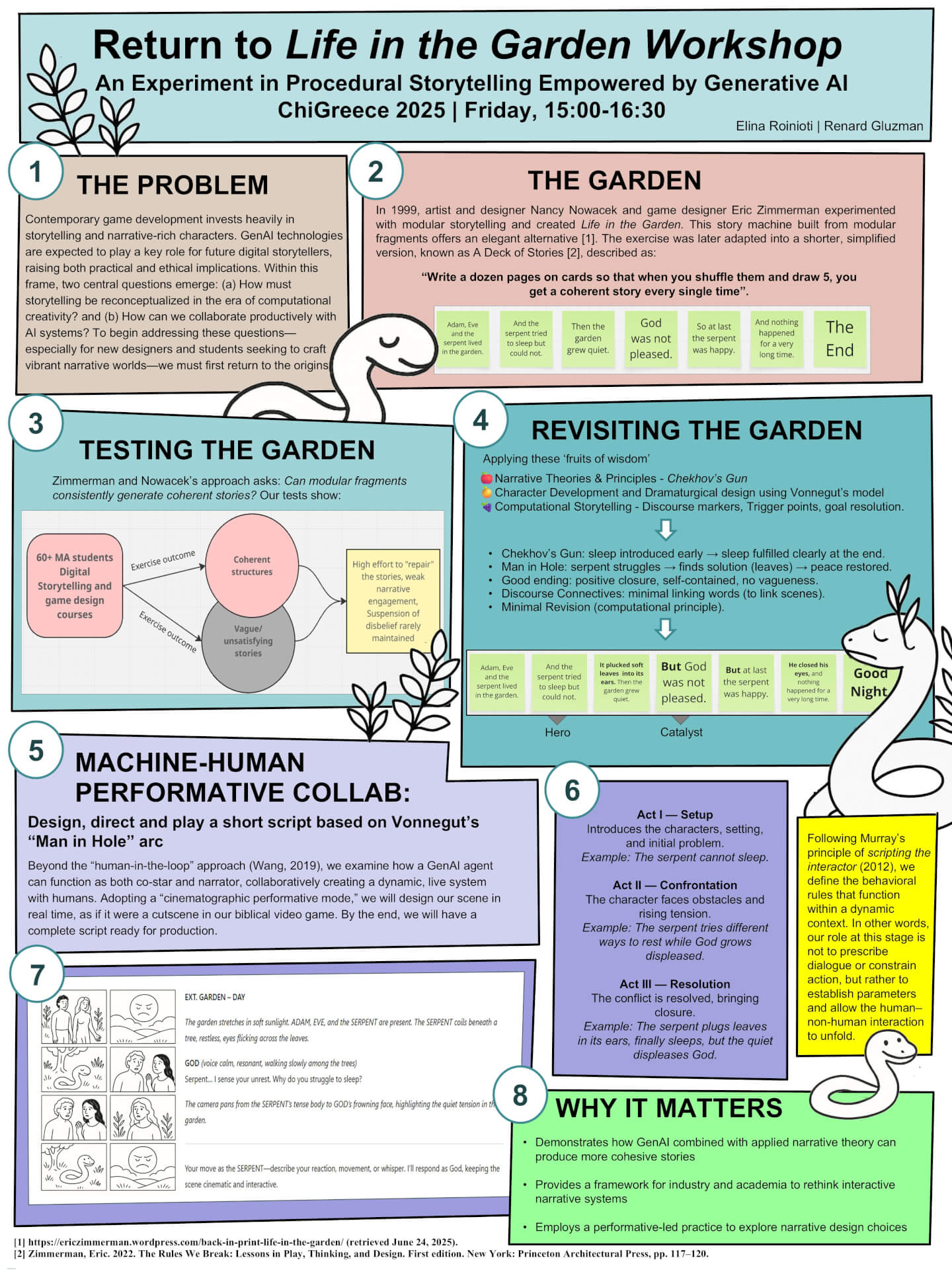This hands-on experience builds on an experiment in modular storytelling, Life in the Garden (1999), created by artist and designer Nancy Nowacek and game designer Eric Zimmerman [1]. The exercise was later adapted into a shorter, simplified version, known as A Deck of Stories, described as: “Write a dozen pages on cards so that when you shuffle them and draw 5, you get a coherent story every single time”.
We tested Zimmerman’s original exercise in various academic contexts with over 60 MA students in digital storytelling and game design courses. Our findings indicate that although the exercise reliably produces coherent structures, the resulting stories often feel vague or unsatisfying. The effort required from participants to fill in meaning was too great, and many quickly grasped the system’s mechanics. As a result, engagement dropped, and the stories produced rarely maintained the suspension of disbelief.
While we value ambiguity as part of interactive storytelling, our goal is to extend Zimmerman’s thinking and propose a model in which creative ambiguity joins systematic thinking and designing. In CHIGreece, we will introduce a revised version of Life in the Garden that integrates generative AI. While retaining its modular storytelling framework, our approach draws on classic interactive storytelling structures (bottlenecks, branching narrative) cinema narrative techniques (scene-setting, trigger points, actor direction),as well as concepts developed in the field of computational narrative and interactive fiction, including procedural authorship [3, 4], expressive processing [4], and narrative planning [5].
We will invite attendees to test and critique our updated method. The discussion that will follow, will include a critical reflection on how generative AI reshapes narrative design practices, particularly in relation to ambiguity, co-authorship, impact on creativity.
Javascript must be enabled to continue!
Return to Life in the Garden

